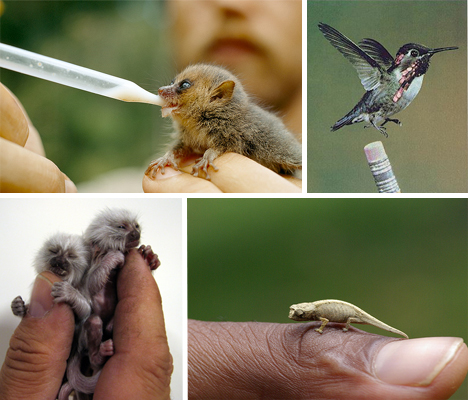
Monkeys that can fit in a teacup, chameleons the size of your thumbnail and hummingbirds that are easily mistaken for insects are just a few examples of the amazingly small creatures found in nature. Many of the world’s tiniest animals are found in what used to be relatively untouched, secluded areas like the island of Madagascar off the southeast coast of Africa, but are now threatened due to human activity. Others are simply aberrations of nature, like Thumbelina, the 17-inch-tall horse. One thing that all of these creatures have in common other than small stature, however, is the fact that they’re insanely cute.
Pygmy Marmoset
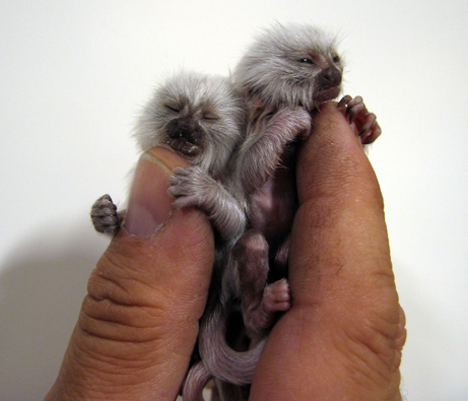
(image via: National Geographic)
The tree-dwelling pygmy marmoset is the world’s smallest monkey, with adults only reaching up to 5 inches in length and 6 ounces in weight. And when they’re babies, like these albino twins born at the Frösö Zoo in Ostersund, Sweden in 2006, they’re exceedingly tiny and unbelievably cute. Pygmy marmosets, whose natural habitat is the western Amazon rainforest of South America, make a lot of loud noises for their tiny size – their whistles and squeals travel far throughout the jungle.
Kitti’s Hog-nosed Bat
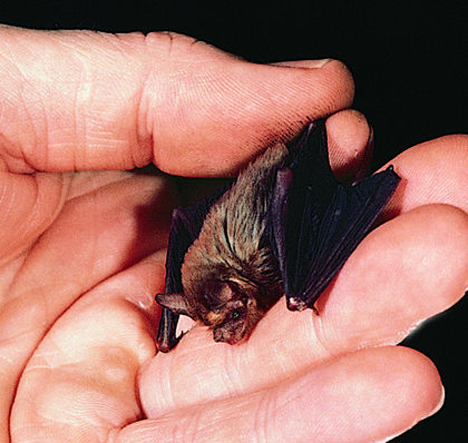
(image via: It’s Nature)
The kitti’s hog-nosed bat – otherwise known as the bumblebee bat – is the smallest mammal known to man. These little creatures weigh roughly the same as a dime (about 2 grams) and measure a miniscule 30 to 40 millimeters as adults. They have large ears, reddish-brown fur and noses that resemble that of a pig, hence the name. They were thought to be living only in a small area of Thailand but have recently been found in the adjacent country of Myanmar.
Brookesia Minima Chameleon
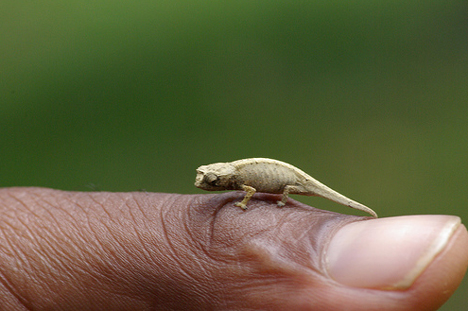
(image via: Flickr user Kirill: Neverwinter Alps)
The Brookesia Minima chameleon is among the smallest reptiles in the world, measuring under an inch long. Barely discernible among the bark and leaves of Madagascar, the Brookesia Minima (also called the Minute leaf chameleon) looks just like a full-sized chameleon, shrunk down to the size of your thumbnail.
Paedocypris Carp
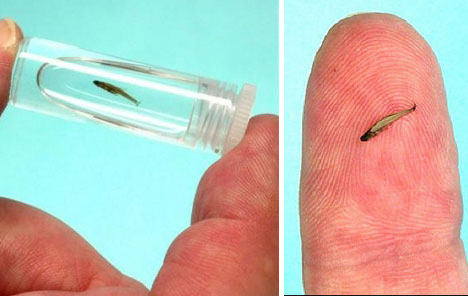
(image via: Mongabay)
The Paedocypris carp is the smallest known fish in the world, found in the peat swamps of Sumatra in 2006. Adults grow only to about 7.9 millimeters. This unusual species has a rudimentary skull which leaves the brain exposed, and it feeds primarily on plankton. Scientists warn that the species is at great risk of extinction due to the destruction of Indonesian peat swamps for palm oil plantations.
Philippine Tarsier
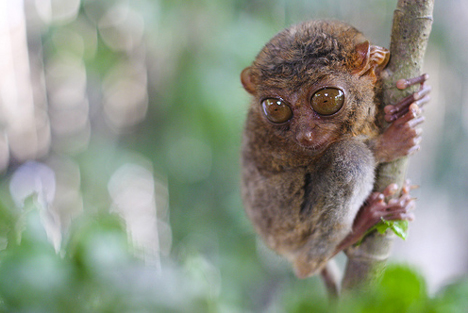
(image via: Flickr user peejay)
The bug-eyed, furry little Philippine Tarsier has been called “the world’s smallest monkey”, but it’s not actually a monkey at all. Scientists have loosely classified them as primates for lack of anywhere else to put them, since they’re extremely unique. They spend all day sleeping in cavities and hollows formed in tree trunks and emerge at night to hunt insects. They average 3 to 6 inches in length with another 5 to 11 inches in their tail. Fun fact about the tarsier: its eyes are literally bigger than its stomach.
Bee Hummingbird
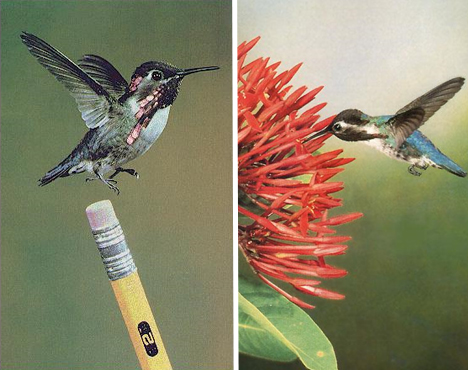
(image via: Animal Pictures Archive)
The diminutive bee hummingbird is the smallest bird in the world – or at least, the male is; females are slightly larger. Native to Cuba, the bird weighs in at a mere 1.8 grams and reaches a length of about 2 inches. The human retina can’t even detect the rapid 80-beats-per-second movement of this extremely small creature’s wings, and it’s easy to mistake it for an insect if you’re not looking carefully at it. Its nest is smaller than a doll’s teacup and its eggs are smaller than coffee beans.
Leptotyphlops Carlae Snake
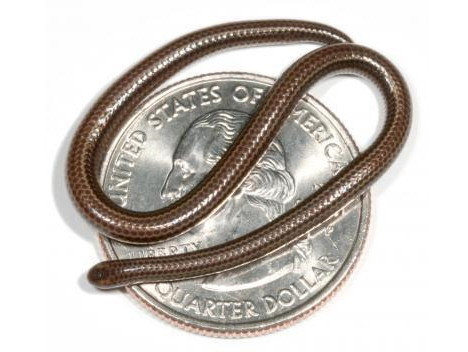
(image via: Science Daily)
The world’s smallest snake was discovered in Barbados in August of 2008. Named Leptotyphlops carlae, the snake is as thin as a spaghetti noodle and an adult can curl up comfortably on a quarter. The species is believed to be rare, since its habitat is being replaced by buildings and farms. Scientists believe that this Barbados snake is either at or near the smallest possible size that a snake can be. It likely feeds primarily on the larvae of ants and other insects.
Hippocampus Denise Seahorse
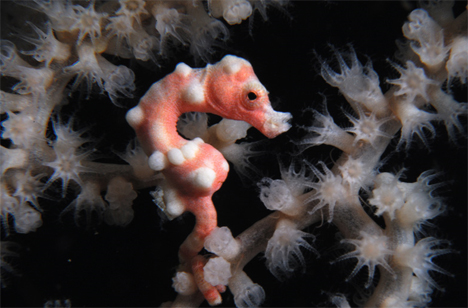
(image via: National Geographic)
The Hippocampus denise seahorse is no bigger than most human fingernails at about 16 millimeters from the its snout to the tip of its tail. It’s so small that experts had previously believed it to be the young of the next smallest seahorse species, the Hippocampus bargibanti. It’s hard to even discern most Hippocampus denise seahorses from the coral they live in off the coast of Indonesia.
Mouse Lemur
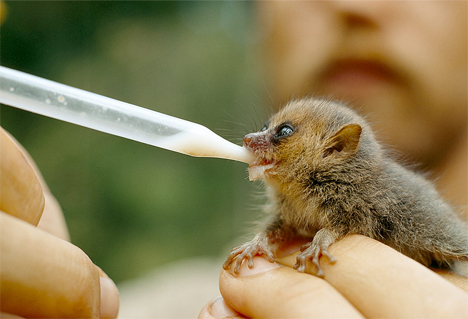
(image via: National Geographic)
It resembles the Philippine Tarsier, but the Mouse Lemur of Madagascar is officially the smallest primate in the world at 2.25 to 4.75 inches. They rarely leave the trees they live in and are nocturnal, so it’s not too surprising that of the eight Mouse Lemur species, several were just recently identified. They’re endangered due to the loss of their limited forest habitat.
Pink Fairy Armadillo
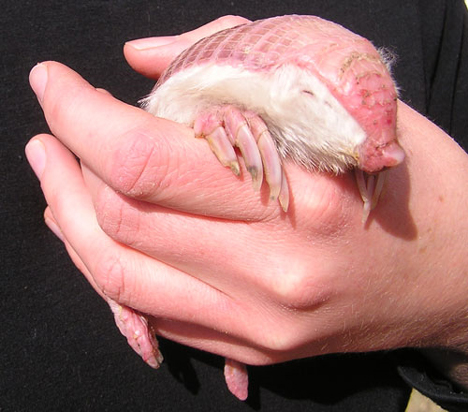
(image via: Nick Baker)
Okay, so maybe this one isn’t adorable at all. When you hear the words “pink fairy”, you probably don’t immediately think of a burrowing mammal with rough pink armor and creepy long nails. The pink fairy armadillo is a rather strange creature, and isn’t seen very often. It’s the smallest armadillo and the only one with a dorsal shell that’s almost completely separate from its body. It lives in the dry grasslands and sandy plains of central Argentina and measures 3.3 to 4.6 inches.
Monte Iberia Eleuth Frog
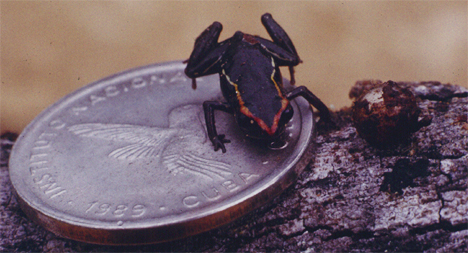
(image via: Culture Quest)
Another tiny creature that was only recently discovered is the Monte Iberia Eleuth Frog, which was discovered on a mountain in Cuba. Specimens that measure just 8.5 millimeters have been found, putting it in the running for the title of world’s smallest frog. The current record holder, the Brazilian gold frog, measures about 9 millimeters. Very little is known about the Monte Iberia Eleuth other than the fact that it’s critically endangered.
Mr. Peebles, World’s Smallest Cat
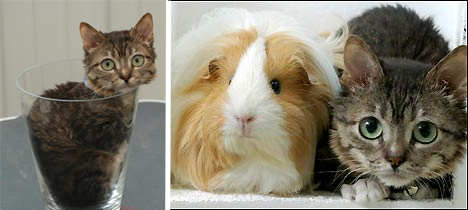
(image via: The Sun + CVM.Missouri.edu)
In addition to incredibly small species, there are also the occasional tiny specimens of species that are generally much larger. Among them is Mr. Peebles, deemed by the Guinness Book of World Records as the smallest living cat. When this photo was taken Mr. Peebles was two years old, weighed just over two pounds, measured about 5 inches long and fit perfectly into a pint glass. Mr. Peebles has a genetic defect and must be fed at least four times a day to sustain his weight.
Ducky, World’s Smallest Dog
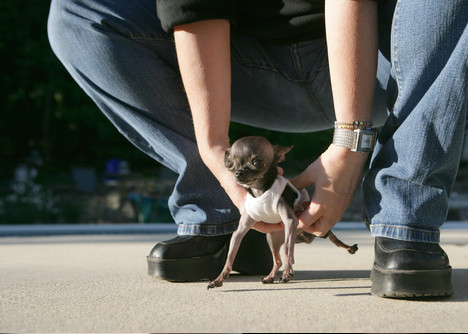
(image via: Chicago Tribune)
At just 1.4 pounds and 4.9 inches tall, Ducky the Chihuahua is the world’s tiniest dog. Ducky is three years old and easily beat the previous record holder, another Chihuahua who stood at 5.4 inches tall, but is by no means the smallest adult dog ever recorded. That honor belongs to a dwarf Yorkshire terrier who reached just 2.8 inches.
Peewee, World’s Smallest Hamster
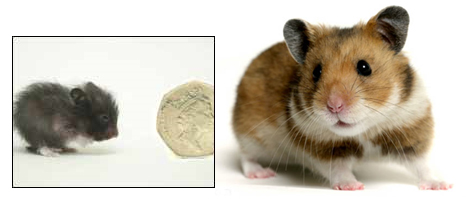
(image via: BBC News)
Peewee is an adult hamster that measures less than an inch in length and weighs less than an ounce. Compared to a normal-sized hamster, Peewee practically looks like a newborn. His owner believes he just stopped growing around three weeks old and says he has a massive appetite, squeezing in between his brothers and sisters to get his fill.
Thumbelina, World’s Smallest Horse

(image via: World’s Smallest Horse)
The world’s smallest horse is just 17 inches tall, barely larger than a house cat. Born on a farm owned by a couple who breeds miniature horses, Thumbelina was tiny even compared to the rest of the couple’s horses, who typically reach about 34 inches in height when fully grown. She weights just 60 pounds and her size has been attributed to dwarfism, making her “a miniature of a miniature”.
More:






